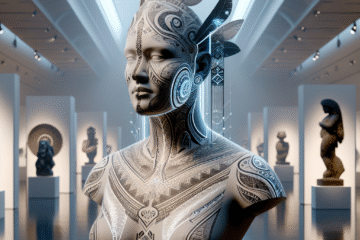Introduction: A Revolution in Form and Function
The Bauhaus was more than a design school—it was a radical movement that reshaped the visual language of the 20th century. Founded in 1919 in Weimar, Germany, by architect Walter Gropius, the Bauhaus emerged at a time when European society was grappling with the aftermath of the First World War. The school’s mission was clear: to reunite art and craft in the service of a new, industrialized society. Rejecting ornamentation and embracing utility, the Bauhaus gave birth to a modern aesthetic that continues to define our architecture, design, and digital culture. This blog will trace its profound impact, era by era.
Chapter 1: Weimar Beginnings — The Dream of Unity
The Weimar phase of the Bauhaus (1919–1925) was characterized by its utopian idealism. Gropius envisioned a new guild of craftsmen devoid of the class distinctions that once separated artists from artisans. Inspired by the Arts and Crafts movement, as well as thinkers like John Ruskin and William Morris, early Bauhaus teachers explored how art could be reintegrated into daily life. The curriculum mixed fine arts—painting, sculpture, theater—with modern techniques in woodworking, metalcraft, and textiles, under the guidance of luminaries such as Wassily Kandinsky and Paul Klee. Here, the Bauhaus laid the philosophical groundwork: form must follow function, but within that function lay vast aesthetic possibilities.
Chapter 2: Dessau and the Embrace of Industry
By 1925, political tensions forced the Bauhaus to relocate to Dessau. In its new industrial setting, the school saw a shift from romantic idealism to sleek rationalism. The Dessau era (1925–1932) represented the Bauhaus at its most productive and iconic, with the construction of the famous Bauhaus Building designed by Gropius himself—a glass and concrete structure that embodied transparency, modularity, and harmony. This phase marked a focus on mass production and standardized design. Designers like Marcel Breuer reimagined furniture using tubular steel, while Josef Albers simplified visual communication to basic geometries and primary colors. The Bauhaus began to influence everything from housing projects to household appliances, inserting itself into the matrix of everyday life.
Chapter 3: Berlin and the Fall — Political Shadows
In 1932, the Bauhaus briefly moved to Berlin before its dissolution by the Nazis in 1933, who deemed its internationalist and modernist ethos ‘degenerate.’ Yet, even in suppression, the Bauhaus ideology proved resilient. Many of its members emigrated, spreading its principles worldwide. Mies van der Rohe, the school’s final director, went on to shape the American skyline with his steel-and-glass towers. The diaspora of Bauhaus artists and architects catalyzed an international movement, planting seeds across Europe, North America, and even Israel—where their ideas helped shape the White City of Tel Aviv. In these years, the Bauhaus transcended geography and became a global language of design.
Chapter 4: Postwar Resonance and Mid-Century Modern
After World War II, the Bauhaus ethos found fertile ground in the booming economies of the West. Its influence fed directly into the Mid-Century Modern movement, seen in everything from Eames chairs to IKEA’s modularity. American universities, particularly the Illinois Institute of Technology under Mies van der Rohe, and Yale with Josef and Anni Albers, became new Bauhaus nodes. The idea that beauty and efficiency could coexist in democratic products flourished. Design became democratized, aligning with Cold War ideals of progress and innovation. In postwar suburbia, Bauhaus-influenced homes and furnishings became hallmarks of the modern lifestyle.
Chapter 5: Digital Bauhaus — The Tech Campus Aesthetic
Today, the Bauhaus legacy lives on, notably in the aesthetics and structures of technology campuses. Apple’s clean lines, Google’s open workspaces, and the emphasis on user-centric design all owe a debt to Bauhaus principles. In education, design thinking continues the Bauhaus commitment to interdisciplinarity and problem-solving. The resurgence of minimalism in digital interfaces—apps, websites, and even user experience (UX) methodology—reflects a reformatting of Bauhaus concepts for a digital age. Spaces like MIT’s Media Lab and the d.school at Stanford echo the Bauhaus in their commitment to uniting art, science, and technology under a single, innovative roof.
Conclusion: A Living Legacy
The Bauhaus was not just a school—it was a disruption, a method, and a movement. It stripped design to its essentials without stripping it of meaning. Its revolutionary approach to art, design, and education laid the foundation for much of our contemporary visual landscape. From iconic architecture to everyday interfaces, the Bauhaus remains a guiding force that continues to shape not only how we see the world, but how we live within it. Its legacy reminds us that thoughtful design is not a luxury, but a necessity of modern life.

Image description:
Signet of the Staatliche Bauhaus, designed by Oskar Schlemmer and used from 1922 (Wingler, Hans M.; Wolfgang Jabs and Basil Gilbert, transl. (1969) [1962] Joseph Stein , ed. Bauhaus: Weimar, Dessau, Berlin, Chicago, Category:Cambridge, Massachusetts: MIT Press ISBN: 0-262-23033-X. )
License:
Public domain
Source:
Wikimedia Commons


